Nervous System: Comprehensive Overview of Structure and Function
VerifiedAdded on 2022/12/15
|5
|913
|167
Homework Assignment
AI Summary
This assignment provides a comprehensive overview of the nervous system, detailing its three main functions: recollection and knowledge, voluntary regulation of drives, programming of spinal string reactions, and control of the internal environment for homeostasis. It classifies the nervous system into the central (brain and spinal cord) and peripheral systems. The assignment elaborates on the roles of cerebral hemispheres, diencephalon, brain stem, and cerebellum, describing their specific functions. It further explains the meninges surrounding the central nervous system and the location and functions of cerebrospinal fluid. The document then describes the origin, structure, and functions of the sympathetic and parasympathetic nerves, including the nervous system's response to stepping on a sharp object. It also differentiates between myelinated and unmyelinated neurons, and explains the events that lead to a nerve impulse, the chemical transport across a synapse, and the structure and function of endocrine glands, including their connection to the nervous system for neuroendocrine control. References are provided at the end.
1 out of 5
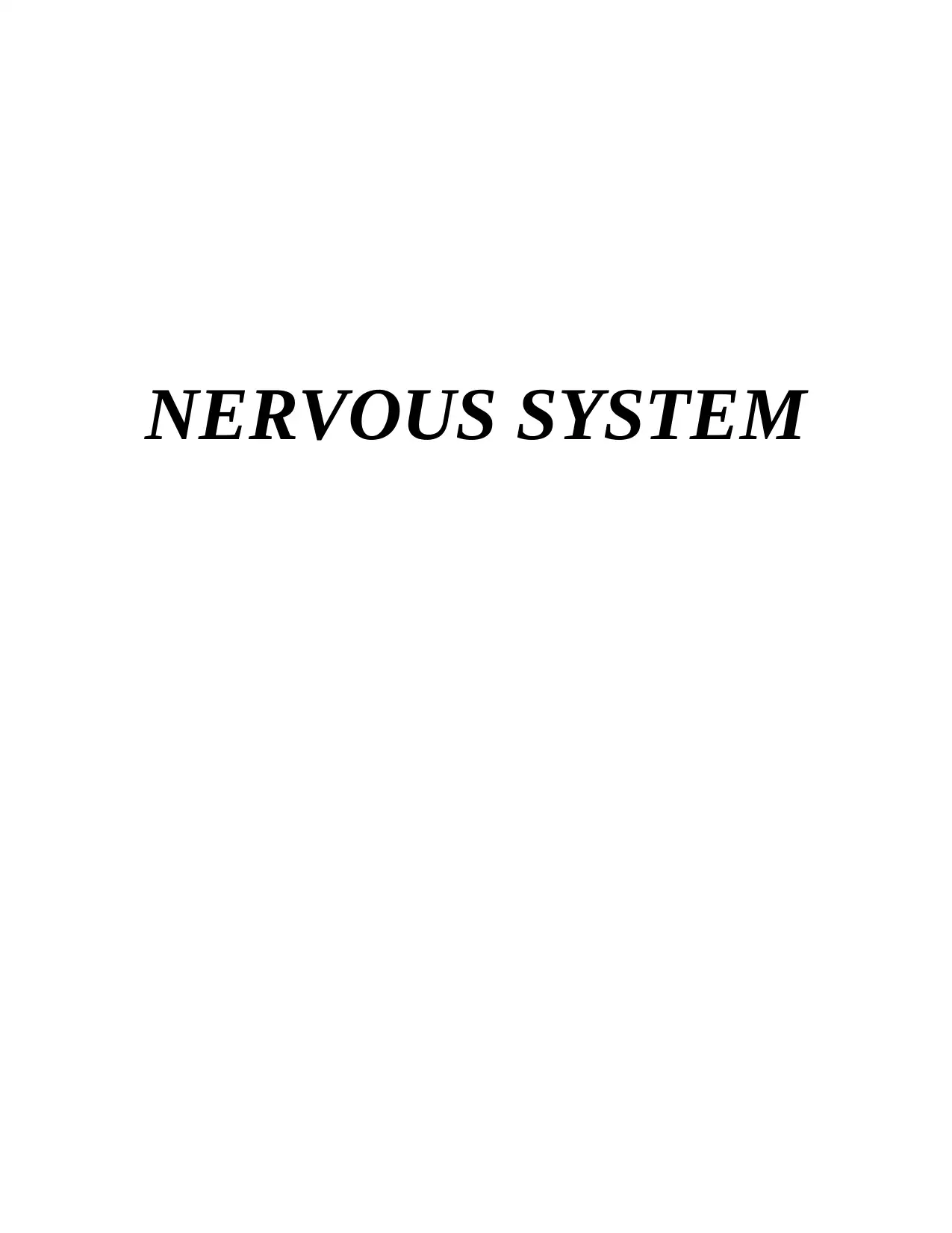
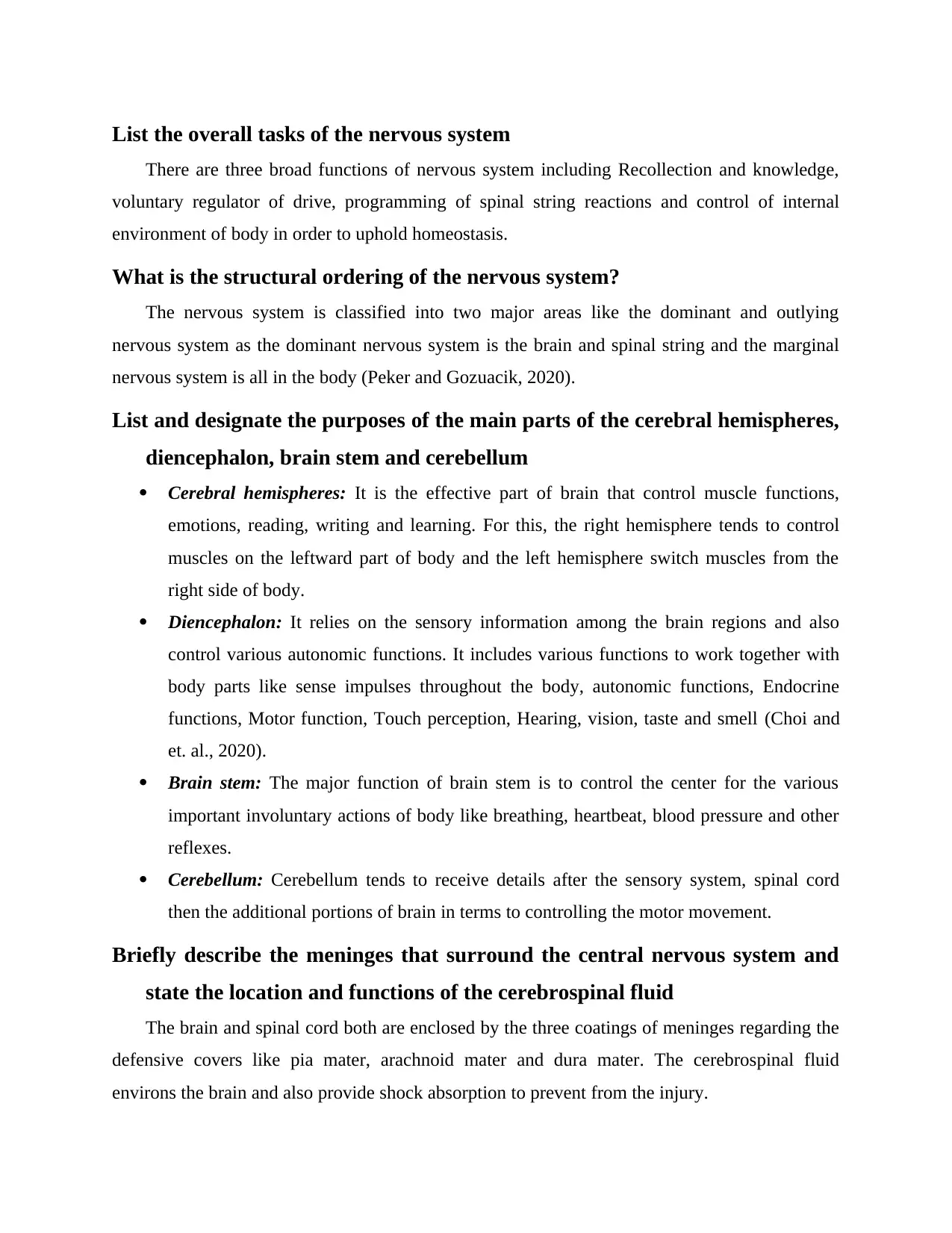
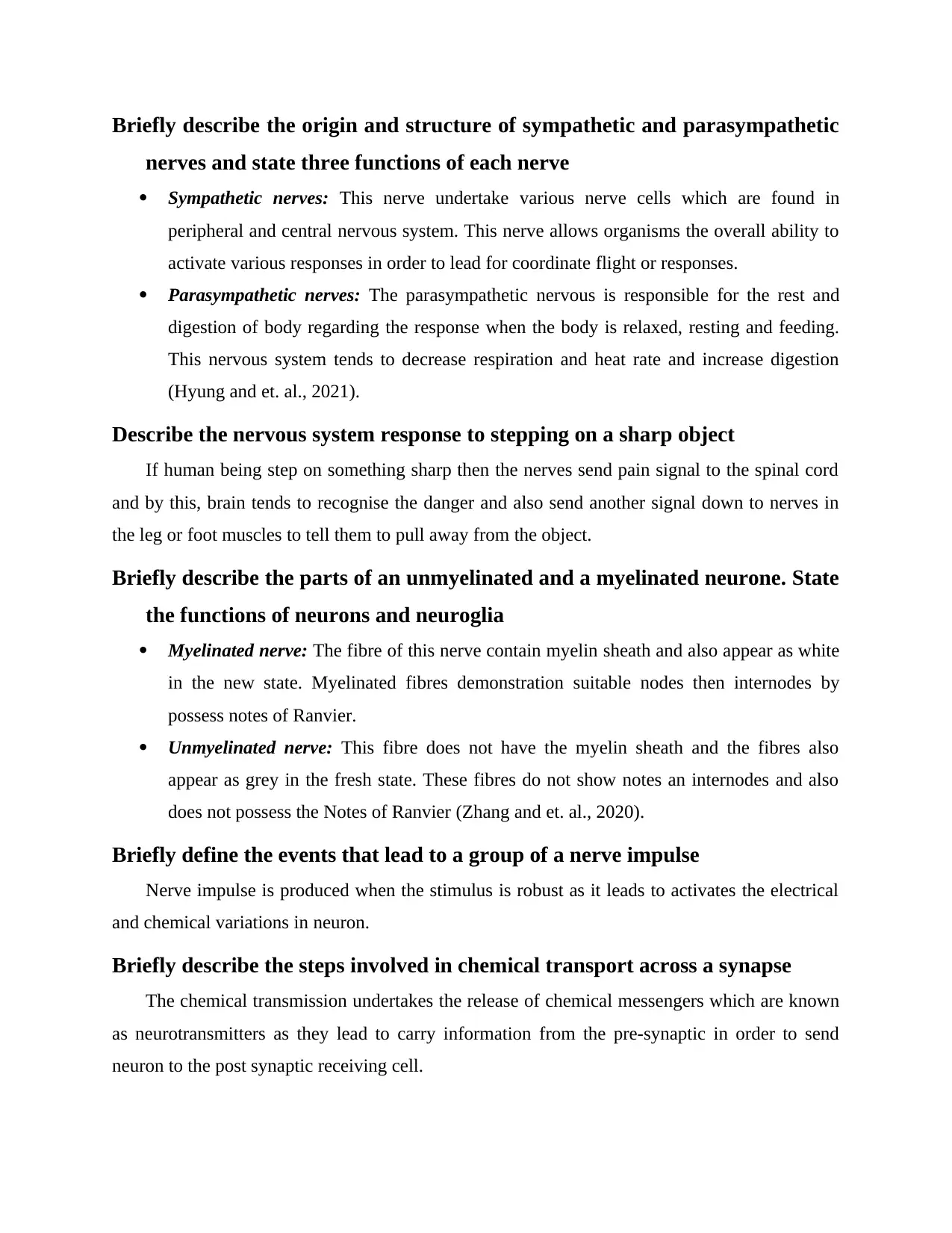

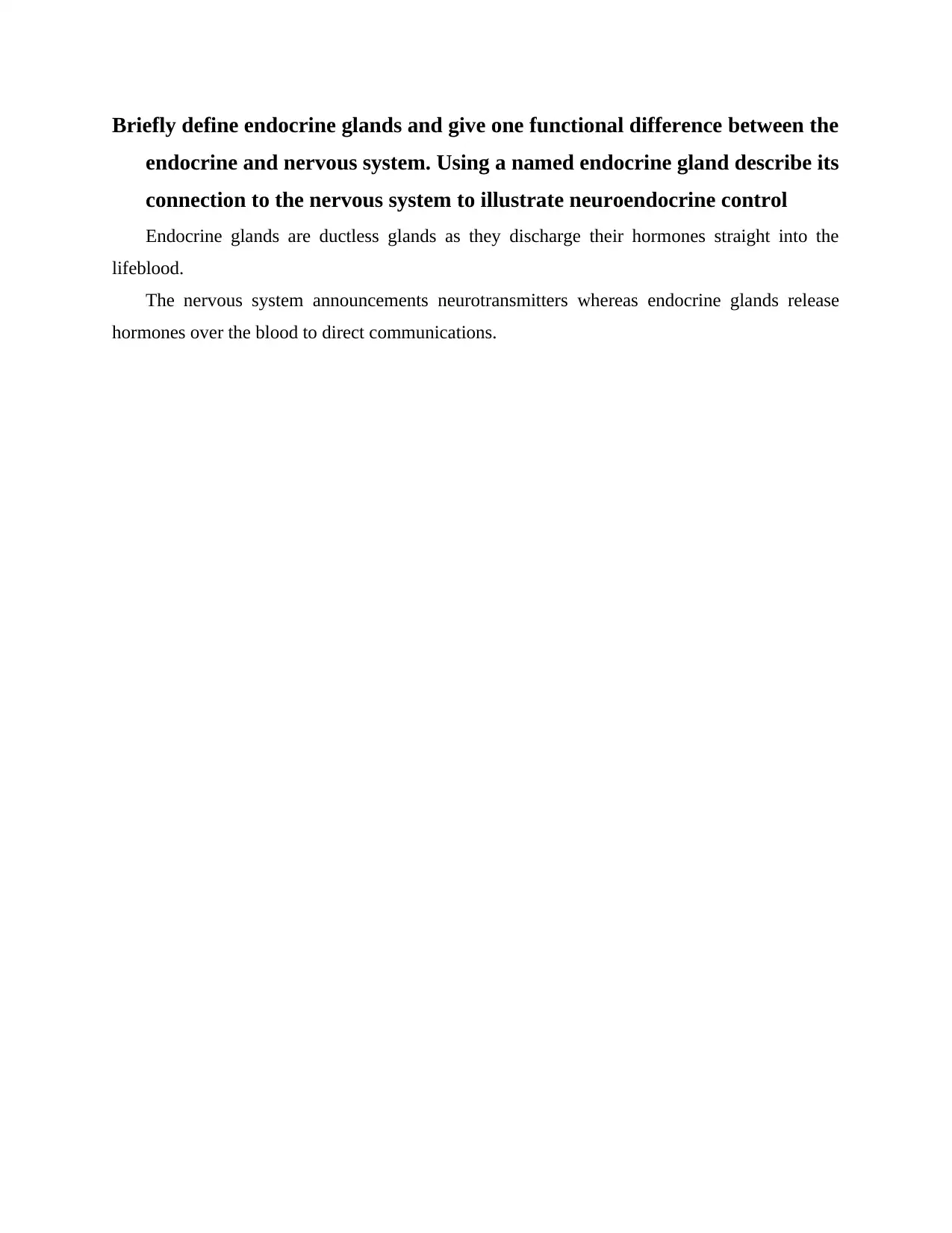
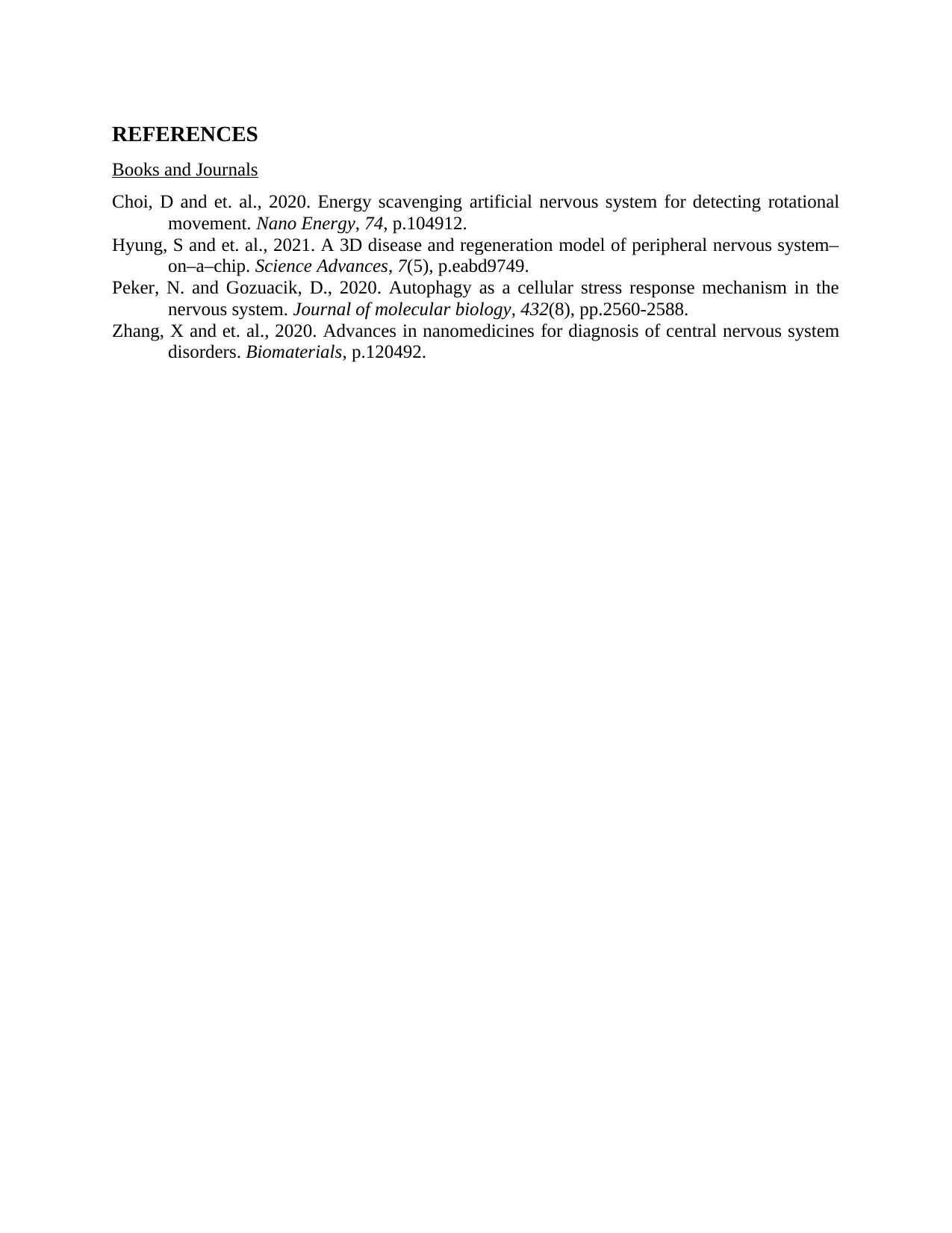






![[object Object]](/_next/static/media/star-bottom.7253800d.svg)